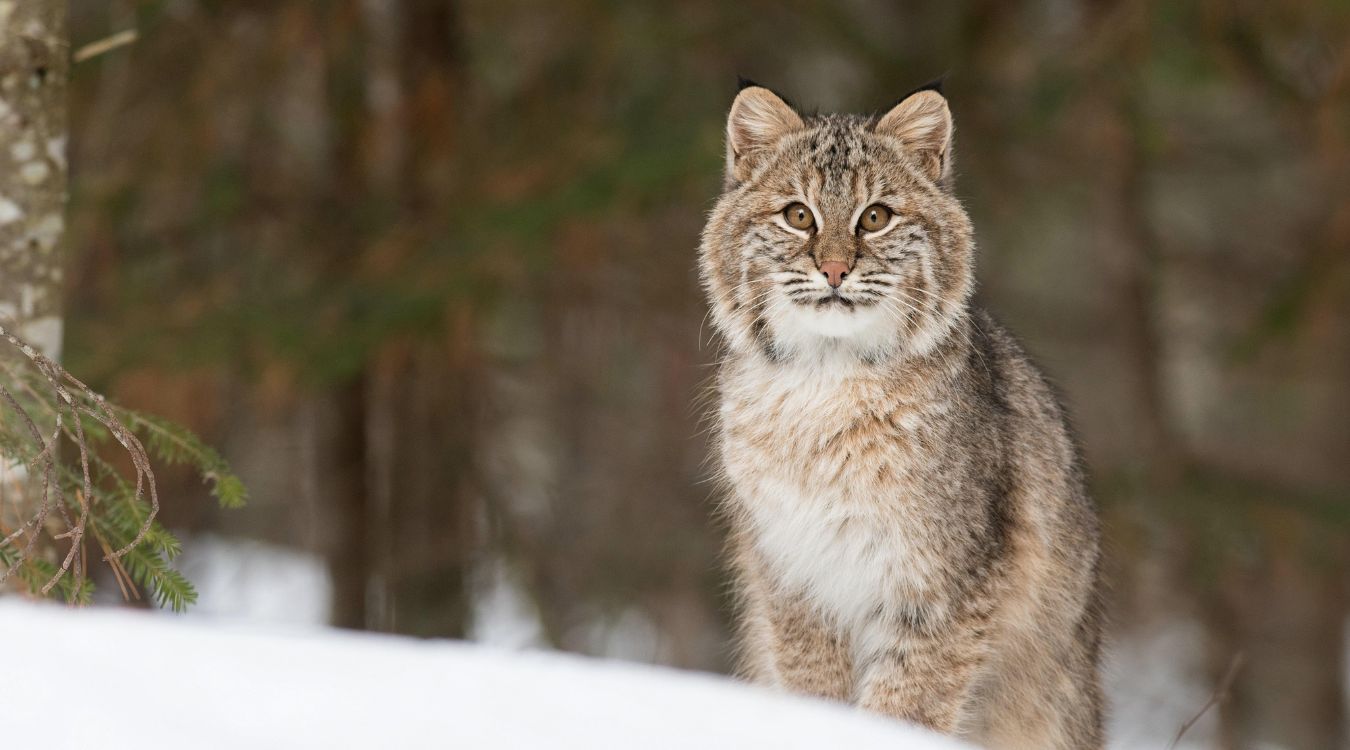Secrets Of Bobcat Habitats In West Virginia’s Canaan Valley

Have you ever wondered where bobcats live in West Virginia? Canaan Valley is a prime spot for these elusive creatures. Nestled in the Allegheny Mountains, this valley offers a perfect mix of forests, wetlands, and open meadows. Bobcats thrive here due to the abundance of prey like rabbits, birds, and small mammals. The dense vegetation provides excellent cover for hunting and raising young. If you're lucky, you might spot one during dawn or dusk when they are most active. Understanding their habitat helps protect these fascinating animals and ensures they continue to roam the wilds of West Virginia.
Discovering Bobcat Habitats in Canaan Valley
Canaan Valley in West Virginia is a hidden gem for wildlife enthusiasts. This lush, mountainous region is home to a variety of creatures, but none as elusive and fascinating as the bobcat. Let's explore some of the best spots to catch a glimpse of these majestic animals.
1. Canaan Valley National Wildlife Refuge
The Canaan Valley National Wildlife Refuge is a prime location for spotting bobcats. This refuge spans over 16,000 acres, offering a mix of wetlands, forests, and meadows—perfect for bobcat habitats.
- Wetlands: Bobcats often hunt in wetlands, where they can find small mammals and birds.
- Forests: Dense forests provide cover and a place for bobcats to rest during the day.
- Meadows: Open meadows are ideal for spotting bobcats in the early morning or late evening.
2. Blackwater Falls State Park
Blackwater Falls State Park is another excellent spot to observe bobcats. The park's diverse terrain, including waterfalls, forests, and rocky outcrops, creates a perfect environment for these elusive creatures.
- Falls Area: The sound of the falls can mask the noise of your approach, increasing your chances of seeing a bobcat.
- Rocky Outcrops: Bobcats often use these areas to survey their territory.
- Forest Trails: Hiking the trails at dawn or dusk can lead to unexpected encounters.
3. Dolly Sods Wilderness
Dolly Sods Wilderness is known for its unique landscape and diverse wildlife. The high plateau, with its mix of bogs, heath barrens, and spruce forests, is a haven for bobcats.
- Bogs: These wet, marshy areas are rich in prey, attracting bobcats.
- Heath Barrens: Open spaces where bobcats can hunt for small mammals.
- Spruce Forests: Dense cover for bobcats to hide and rest.
4. Monongahela National Forest
Monongahela National Forest offers vast, unspoiled wilderness where bobcats thrive. This forest covers nearly a million acres, providing ample space for bobcats to roam.
- Remote Trails: Less-traveled paths increase the likelihood of spotting a bobcat.
- Streams and Rivers: Bobcats often hunt near water sources.
- Old Growth Forests: These areas offer excellent cover and hunting grounds.
5. Seneca Rocks
Seneca Rocks is famous for its towering cliffs and rock formations. While it's a popular spot for climbers, it's also a great place to see bobcats.
- Cliff Areas: Bobcats use these high vantage points to scout for prey.
- Wooded Areas: Surrounding forests provide cover and hunting grounds.
- Quiet Trails: Early morning hikes can lead to sightings.
6. Spruce Knob
Spruce Knob, the highest point in West Virginia, offers stunning views and a chance to see bobcats. The varied terrain includes spruce forests, meadows, and rocky areas.
- Summit Area: The high elevation provides a unique habitat for bobcats.
- Forest Edges: Bobcats often hunt along the edges of forests and meadows.
- Rocky Slopes: These areas offer cover and hunting opportunities.
7. Otter Creek Wilderness
Otter Creek Wilderness is a lesser-known gem in the Monongahela National Forest. Its remote location and diverse habitats make it an ideal spot for bobcat sightings.
- Creek Areas: Bobcats hunt along the creek for fish and small mammals.
- Dense Forests: These provide cover and resting spots.
- Open Meadows: Early morning or late evening visits increase the chances of seeing a bobcat.
8. Cranberry Glades Botanical Area
Cranberry Glades Botanical Area is a unique ecosystem in West Virginia. The glades' acidic bogs and surrounding forests create a perfect environment for bobcats.
- Bogs: Rich in prey, attracting bobcats.
- Forest Trails: Quiet walks can lead to sightings.
- Observation Decks: Great for scanning the area without disturbing wildlife.
9. Kumbrabow State Forest
Kumbrabow State Forest is a lesser-known spot with excellent bobcat habitats. Its rugged terrain and dense forests offer a perfect environment for these elusive animals.
- Rugged Trails: Less-traveled paths increase the likelihood of spotting a bobcat.
- Dense Forests: Provide cover and hunting grounds.
- Mountain Streams: Bobcats often hunt near water sources.
10. Cheat Mountain
Cheat Mountain is a remote, high-elevation area in West Virginia. Its rugged terrain and dense forests make it a prime location for bobcat habitats.
- High Elevation: Unique habitat for bobcats.
- Remote Trails: Increase the chances of sightings.
- Dense Forests: Offer cover and hunting grounds.
Understanding Bobcat Habitats in Canaan Valley
Bobcats in West Virginia's Canaan Valley thrive in diverse habitats. These elusive creatures prefer dense forests, rocky outcrops, and wetlands. They rely on these areas for hunting, shelter, and raising their young. The valley's rich biodiversity supports a healthy bobcat population, making it a prime location for wildlife enthusiasts.
Conservation efforts play a crucial role in maintaining these habitats. Protecting forests and wetlands ensures bobcats have the resources they need. Public awareness and responsible outdoor activities help minimize human impact on their environment.
Exploring Canaan Valley offers a unique opportunity to witness bobcats in their natural setting. Whether you're hiking, birdwatching, or simply enjoying nature, keep an eye out for signs of these fascinating animals. Understanding their habitats enriches your experience and fosters a deeper appreciation for the valley's wildlife.

